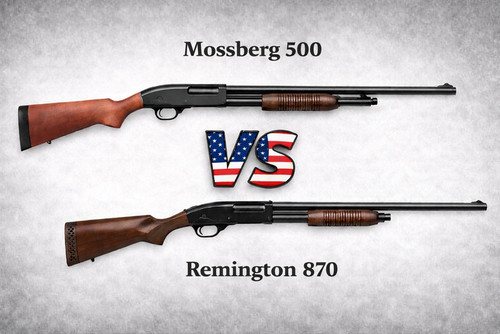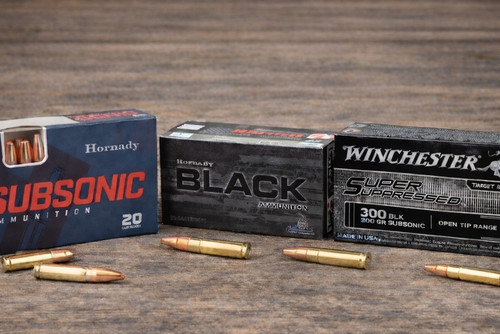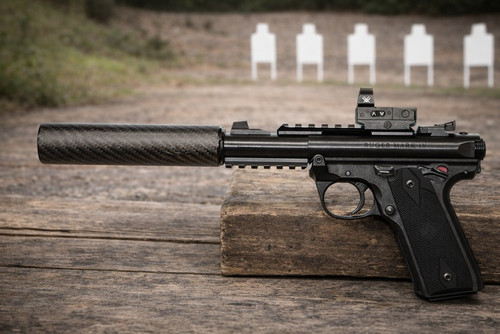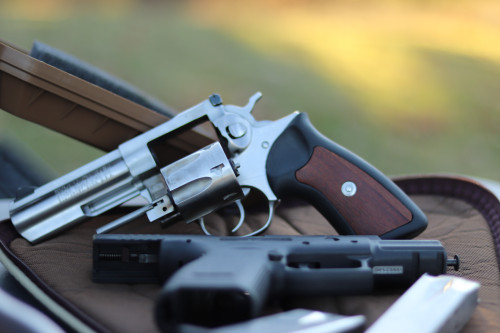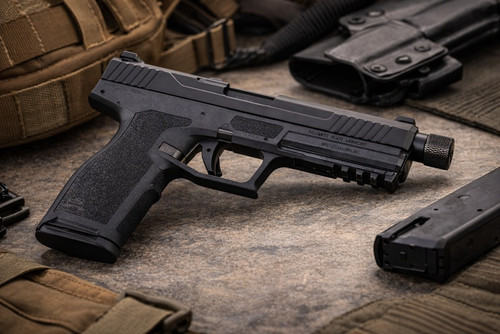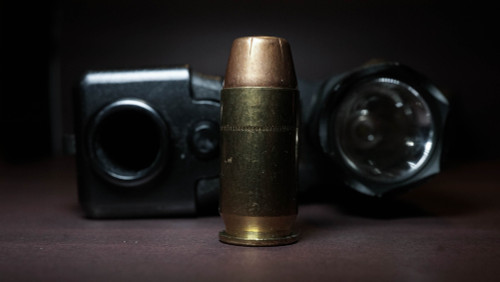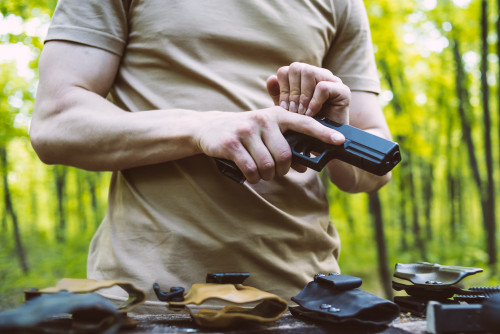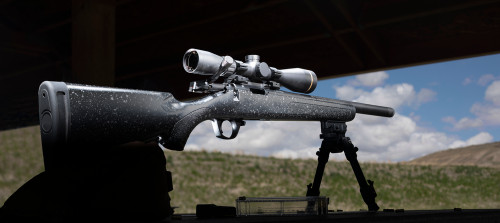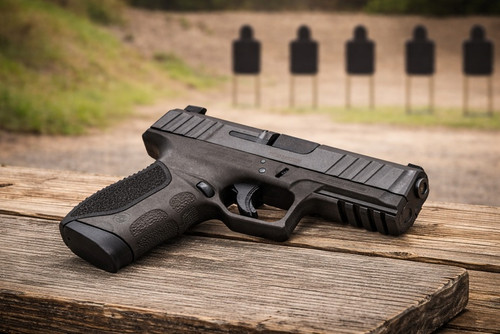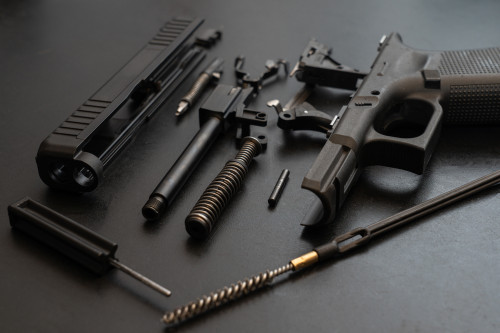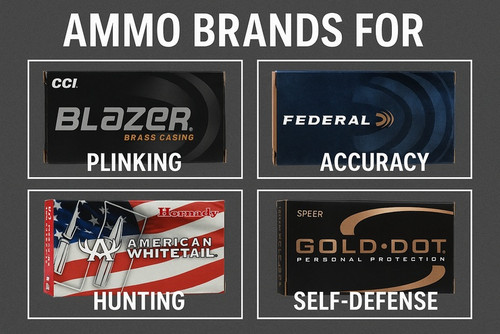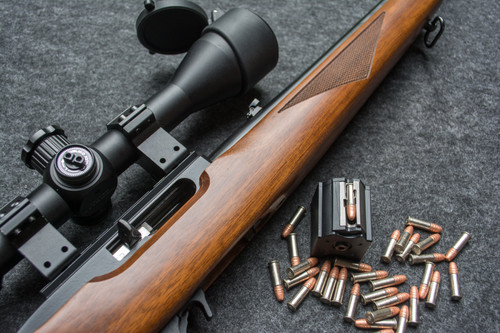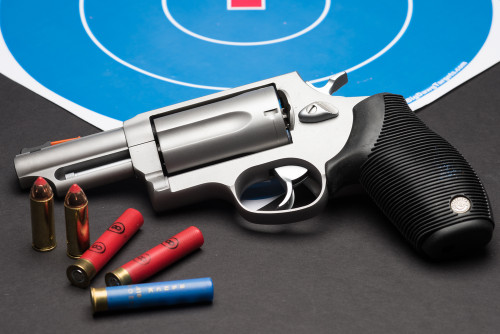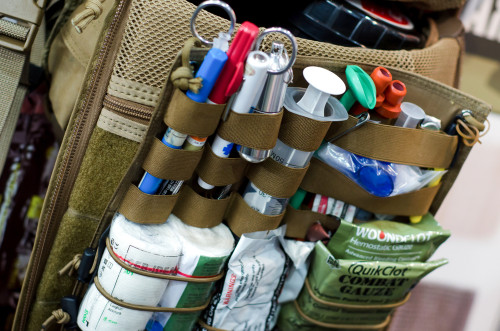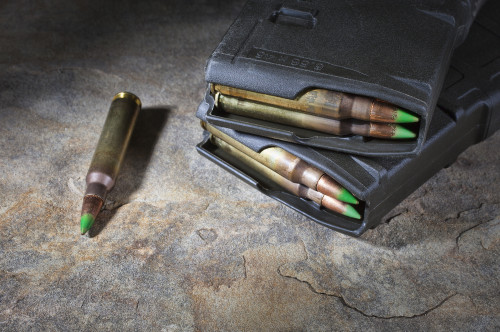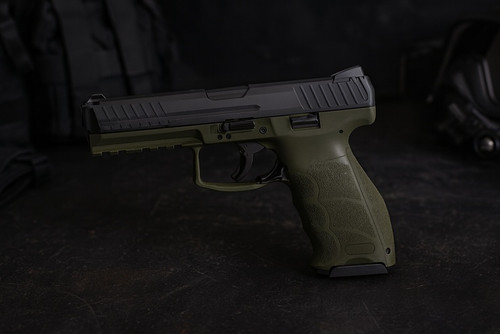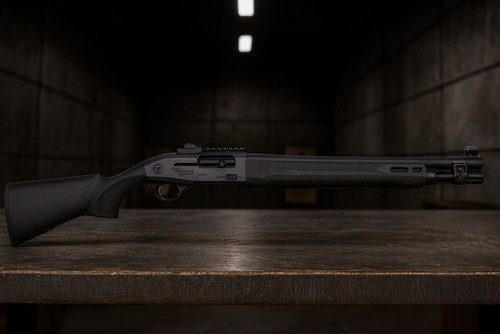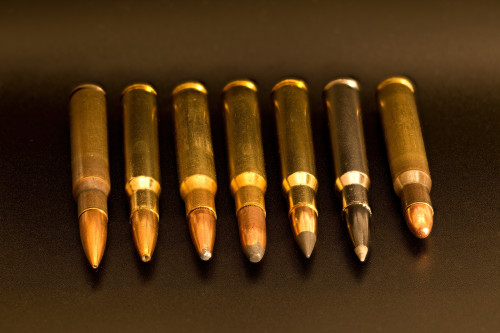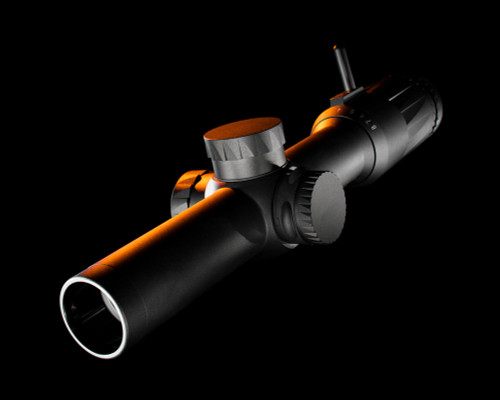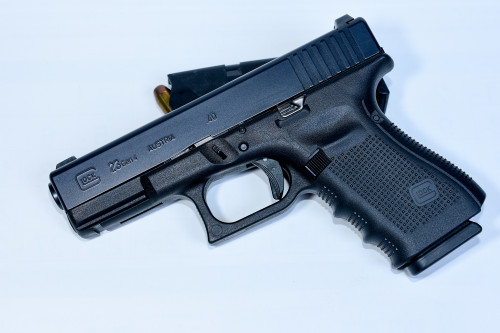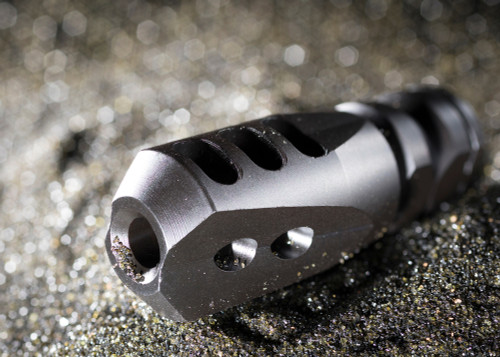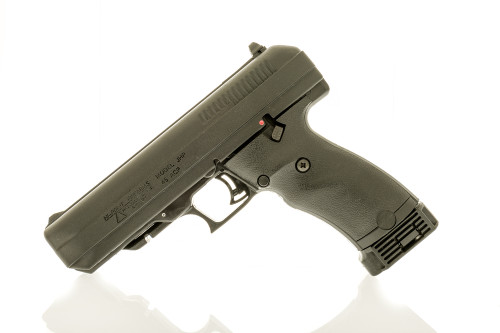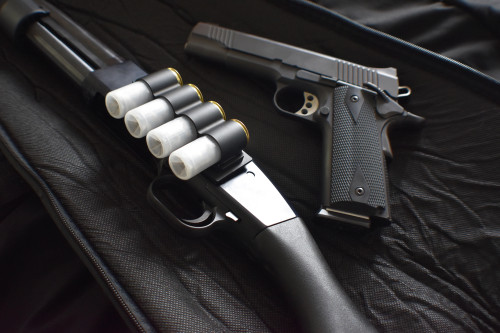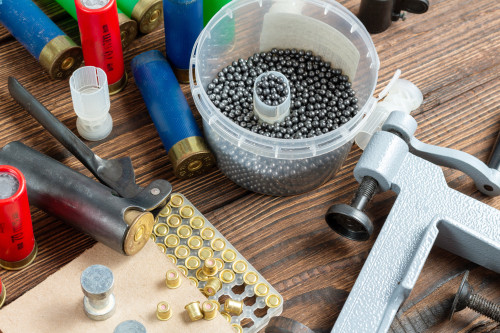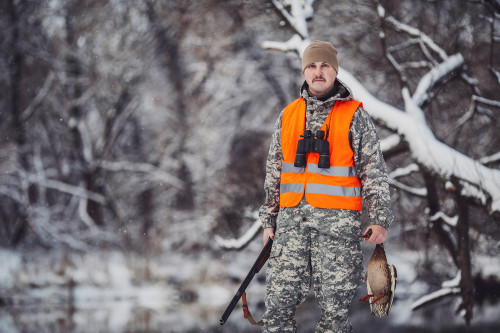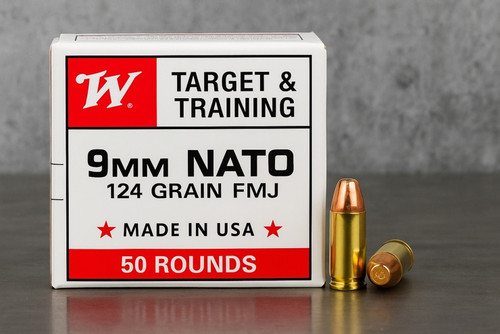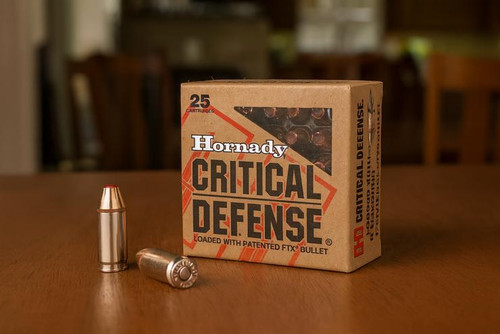The firearm has been called “the great equalizer.” A gun places a 90-pound woman on equal footing with a 210-pound male assailant. Few attackers can walk away from a group of well-placed 9mm hollow-point rounds. However, there are times when a firearm might not be the best option.
For some there may be physical limitations that even adaptive shooting techniques cannot remedy. For others, bureaucratic barriers may exist (i.e. like in New York State where approval to even purchase a gun can take many months). Some may have philosophical objections to using firearms, while others can’t legally own a firearm at all. Then there are areas where firearms ownership is severely restricted or outright illegal. In any of these cases, a non-lethal option may be more appropriate (or at least better than an empty hand).
We believe non-lethal defensive tools have a place in every prepared citizen’s toolkit. Let’s look at some of the best and most useful non-lethal (or less-lethal) tools that everyone should have.
Considerations for Non-Lethal Weapons
Assuming there are no legal or physical barriers to carry, (i.e. permits, metal detector/millimeter-wave checkpoints), a firearm is the most effective self-defense tool for several reasons:
- Non-lethal weapons often use a multi-step process to engage and deploy. For instance, pepper spray must be taken out of a holder, made ready, and aimed before deploying. A Taser is difficult to reload under stress. Noisemakers usually have a small, non-ergonomic switch. For the elderly or anyone who is not extremely quick, fumbling around with a non-lethal weapon may create higher risk under stress.
- A firearm requires training, but the learning curve is often less painful. In some cases, to obtain professional certifications in non-lethal weapons, you must subject yourself to being hit with it to understand its effects. No firearm certification in the world requires being shot.
- You still need training with non-lethal weapons. However, outside of Tasers and professional-grade pepper spray (Sabre), consistent training for non-lethal options is tough to find.
However, non-lethal weapons should be employed especially if you face a legal barrier to firearms ownership, hold philosophical objections to firearms, or are entering a non-permissive environment ( i.e. a location where physical searches or metal detector/millimeter wave scanners are in use).
Legal Consideration for Non-Lethal weapons
Currently the term “less-lethal” or “less-than-lethal” is preferred over “non-lethal” for several reasons (many of which have to do with liability). Some manufacturers have been sued for calling their products “non-lethal.” When someone is killed by one of these products, the terminology becomes a point of contention.
In practice, any weapon can be deadly. Pepper sprays cause respiratory distress, which can lead to death if an individual has a sensitivity to it. If a person has a heart condition, or is in a state of what law enforcement calls “excited delirium,” a Taser hit could kill them. Likewise, an impact weapon can cause severe internal bleeding, which could lead to death.
This is why most companies that cater to law enforcement, military, private security, and private defense companies now use the “less-than-lethal” terminology because it’s technically more accurate. However, the term “non-lethal” is still used colloquially to describe weapons other than firearms.
Let’s break down some of the most popular “less-than-lethal” weapons and their real-world applications.
Pepper Spray
The most common non-lethal self-defense tool may be the pepper spray. The first pepper “spray” was developed by the Aztecs, who threw peppers into a fire to create an airborne irritant. In the modern era, companies such as Zarc International made portable versions of military gas irritants. Prior to that, oleoresin capsicum (OC) sprays were deployed to disperse large crowds. For personal use, the deployment device has been downsized to a small can, which can be easily clipped to a belt or concealed in a bag or purse.
United States postal service workers were some of the earliest adopters of portable OC sprays (to ward off wild dogs and feral cats on their routes). While OC-based sprays are the most common, derivatives of CS “tear gas” are now becoming more popular. Compact and affordable, most spray/gel weapons cost under $40.
Pepper Spray Delivery Methods
Whether you purchase an OC or CS spray, do some research on the delivery medium to choose the most effective form.
- Spray - An aerosol that propels painfully blinding material in a powerful mist. Visually, it’s no different than hairspray or deodorant, however it is subject to wind and air currents. Spray can be blown back, incapacitating you and giving your attacker an even greater advantage. Sprays can also incapacitate bystanders, especially if used indoors.
- Gel - The current “kings” of OC/CS products, Sabre, offers a gel-based OC non-lethal option. Similar in viscosity to hair gel, pepper gel is deployed in a more coherent stream, and adheres to the target, causing a more directed and potent effect. A similar delivery method is a skin-irritating foam.
- Pepperball Gun - The pepperball is a small sphere of OC or CS solution, which explodes upon impact, delivering a blast of gel. Companies like Byrna sell pepperball guns, which are similar to paintball guns. Having similar ergonomics to a firearm, pepperball guns could be a viable option if you want to keep your training and “muscle memory” on point. The main downside to pepperball guns is their price. For example, the Byrna LE model costs $479, which is more expensive than some firearms.
Pepper Spray in Practical Use
OC/CS (and other pepper-based non-lethal self-defense tools) are only designed to incapacitate a threat, not neutralize them. A person hit with pepper spray or gel will still have use of their hands and feet. They may be unable to see or move about easily, but they can still operate a weapon or strike you. That said, these items can buy you time to escape or deploy a more potent tool such as a firearm.
Also, pepper-based self-defense tools can be ineffective when used by someone who is drunk or under the influence of narcotics. With the latter, the person’s pain receptors can be described as “offline,” and they may not stop unless severely incapacitated or dealt a hit from a lethal weapon.
There are also legal considerations concerning purchase and use of these sprays and gels. While these are legal in all 50 states, some jurisdictions place arcane restrictions on their purchase. For example, New York State law dictates that sprays can only be purchased in-person from a firearms dealer or pharmacy.
Personal Alarms
A personal alarm is a small and portable sonic emitter that broadcasts an extremely loud sound (130-140 decibels). The purpose is to disorient and distract an attacker while also functioning as a beacon to draw help from others during an attack.
Personal alarms are simple devices, activated using a simple on-off switch or a “pull the pin” method. Personal alarms require no training and little strength to use properly. Also, they’re quite affordable, with most costing under $30, and even importers like Temu offer alarms for $2 or $3. Another advantage is that personal alarms are pretty much legal and unrestricted worldwide, as they are only considered noisemakers.
The portable door alarm (a variant of the personal alarm) is also useful. Equipped with a simple motion sensor, the portable door alarm engages when it senses the sudden movement of the door it’s attached to. This could buy you a few extra seconds, allowing you to grab a more potent tool such as a spray, impact weapon, or firearm.
However, much like pepper sprays, a personal alarm may have little to no effect on someone under the influence of alcohol or narcotics. Plus, the sound will not incapacitate them to a severe degree. An assailant can still use a firearm, knife, or bare hands and feet against you.
Advanced Versions of Personal Alarms
When configured, the iOS or Android Noonlight application can act as a sophisticated “panic button” sending a distress message to Noonlight HQ, who then notifies the authorities. The app can also be configured to transmit an activity timeline to Noonlight HQ and trusted friends. This timeline can be used to assist to locate you if you are incapacitated during an attack. Another handy feature is Noonlight’s open integration with popular social networking and dating apps.
Dual Purpose Tactical Flashlights
Many common items can also be used as a defensive tool. The tactical flashlight is just one great example.
Tactical Flashlight Practical Use
Some dedicated flashlights have high-lumen output and sturdy construction purposefully built for non-lethal defensive use. Tactical flashlights often feature a high-lumen output, usually of 1000 lumens or more, that can disorient an attacker with the intensity of its beam. These can mount to a weapon or act as a standalone tool.
Defensive flashlights may also sport a hardened steel bezel and an overall hardened construction, which allows the flashlight to be used as a compact striking weapon. The hardened bezel can even damage bone when used forcefully and appropriately.
Flashlight Models for Your Toolbelt
In addition to a bright light output, the heavy weight and tough aluminum alloy of a Maglite make it a pretty effective club. Another model is the Sabre 2-in-1 tactical flashlight. While generic in appearance, the Sabre is outfitted with an electrified bezel which allows the flashlight to be used as a contact stun gun. Covert and affordable, it can pack a little extra punch in your battle belt.
Like other non-lethal defensive tools, a flashlight may be ineffective against attackers under the influence of alcohol or narcotics.
Tactical Pens
The most popular non-lethal self-defense tools are those that appear mundane or typical. Sprays and Tasers look like weapons (because they are). However, if a weapon looks like a flashlight or a pen, it carries the added benefit of discretion while also doubling as a weapon and a tool.
That’s why tactical pens are popular these days. Compact, useful, and affordable, the tactical pen can function as a covert and concealable impact weapon. Some tactical pens such as the Atomic Bear series are equipped with a sharp point similar to the kubotan (while the part that actually writes is hidden inside the pen).
To use it, you grab it and drive the point into an attacker’s pressure points. While kubotans are distinctive in appearance, a tactical pen looks like a pen one would use at a construction site or similar environment. It can often pass unnoticed in locations where other weapons may be prohibited.
Atomic Bear is a great brand of a tactical pen — in addition to being able to write, some models also include a miniature screwdriver and a built-in tactical flashlight. Best of all, tactical pens are quite affordable, with most clocking in around $25-$30.
Keychain Weapons
The most popular keychain weapon is usually a miniature kubotan. While not as effective as a full-sized (6 inches or so) kubotan, a miniature kubotan is a discreet tool for close encounters in environments where larger defensive items are not permitted. Often sold as “joint massagers,” keychain kubotans are an affordable line of defense and can also be used in a flailing fashion, similar to a small pair of nunchucks.
Other keychain devices include compact tactical pens, miniature pepper spray canisters, glass breakers, and the ever-popular knuckle dusters, aka the brass knuckle.
While most keychain weapons are legal in all 50 states, 22 states ban them. These laws are often anachronistic, as brass knuckles were seen as “thug” weapons and not legitimate self-defense tools. However, law enforcement may give you a hard time if they find them in your possession.
Electric Weapons: Stun Guns and Tasers
While stun guns and Tasers operate differently, both use a strong electric pulse to paralyze and disrupt the nervous system of an attacker. You’ve probably seen the videos of someone “riding the lightning” — the electric pulse causes the assailant to seize up and fall over. As one of the more potent families of non-lethal self-defense tools, electric weapons do have some specific considerations.
NOTE: While all Tasers are stun guns, not all stun guns are Tasers. Tasers are a specific trademarked item designed by the technology company Axon Enterprise.
What Is a Stun Gun?
In its simplest form, a stun gun is a contact weapon. Resembling an electric razor, a contact stun gun has two prongs between which crackles a jolt of electricity. When you press the weapon into a target and hit the power button, the electricity travels from one prong through the body of the attacker and to the other prong, completing an electrical circuit. The immediate effect is pain and paralysis. The Sabre Mini Stun is a great example, offering 600,000 volts and a 120-Lumen LED Flashlight.
A stun gun will buy you time to escape an attack or deploy a more potent response, but the caveat is that you must be in contact with your attacker. He may be stunned, but he could still strike you with an impact weapon, knife, or bullet.
Another downside of non-Sabre stun guns is that most are built overseas. Many of these companies build them out of cheap materials and apply their own label to the product for marketing. You may spend $50 on a stun gun, only to find the exact same model being sold for $20 under another label.
What Is a Taser?
A Taser is a stun gun that can deliver a powerful jolt of incapacitating electricity at a distance. Utilizing two prongs attached to a length of wire, a compressed charge of air propels the prongs across a distance, puncturing an assailant’s skin and most likely incapacitating them.
The term Taser itself is a trademark. Standing for “Thomas A Swift’s Electric Rifle,” the TASER is the “big daddy” of the stun gun world. Tasers come in a variety of configurations for a range of use cases. Utilized by citizens, law enforcement, and military personnel, Tasers have evolved from being mere “stun guns at a distance” to sophisticated non-lethal self-defense tools.
Modern Tasers such as the 7CQ feature multiple shots per cartridge and “smart” tools such as internal firmware to optimize charge delivery. Some even feature a video camera to record encounters for evidence reasons, which could help support the user’s case of self-defense.
Still, Tasers have several downsides. Like any non-lethal tool, the Taser can be rendered ineffective if the target is under the influence. Tasers are also expensive, with each reload costing at least $60 depending on the model. Under duress, it can be really hard to aim them — and that’s an expensive miss.
Legal Considerations for Stun Guns and Tasers
Tasers, stun guns, and other electric weapons are legal in 49 states, with Hawai’i being the lone holdout, where they are illegal for citizen use. The other 49 states have varying restrictions on the purchase and carry of electric weapons. However, a recent Supreme Court decision (Caetano vs Massachusetts) ruled that electric weapons are protected by the Second Amendment, and thus cannot be banned. This decision also bodes well for future developments in lethal and non-lethal weapons such as electromagnetic accelerators, affirming the fact that the Second Amendment was written with the future in mind.
Batons
Perhaps the oldest weapon in human existence (next to the rock) is the stick. Over the years, several iterations on this common yet effective tool led to the baton. Used by police, military, and security operations, the baton has all the whacking power of the traditional stick in a metal or hard plastic design. Many also have ergonomic handles that make them easier to wield.
- Traditional Batons - A prime example is the Monadnock PR-24 side-handle baton. With a dedicated grip, the classic PR-24 has served law enforcement for generations, and is quite functional in the hands of a trained user.
- Collapsible Batons - Made by companies like ASP, the collapsible baton is a compact metal baton, that with a click of a button (or a strong flicking motion) can extend into a full-sized impact weapon. Made of aluminum alloys or steel, a collapsible baton can be devastating in the hands of a trained user.
Conclusions
Though the most effective self-defense tool ever developed is the firearm, non-lethal self-defense tools have a place in your defensive toolkit.
After all there are situations or locations where using or carrying a firearm may not be legal, appropriate, or practical. While an impact weapon, spray, or stun gun may not permanently neutralize a threat, they may provide you valuable time to escape a violent situation, or reach your firearm to deal with the threat in a more potent fashion.
Non-lethal self-defense tools can also be useful for those who have legal obstacles to firearms ownership, or who may not be comfortable with the idea of shooting someone in self-defense. However, unarmed self-defense is quite difficult unless you’ve had years of intense training.
Looking for tactical gear to enhance your self-defense toolkit? Pro Armory is just the place. We offer gear to help you become more effective in any scenario, plus online training to help you become more efficient and safe with your firearm. Take your safety into your own hands. Browse our deals on gear today and sign up for our newsletter to be notified when training officially launches.






